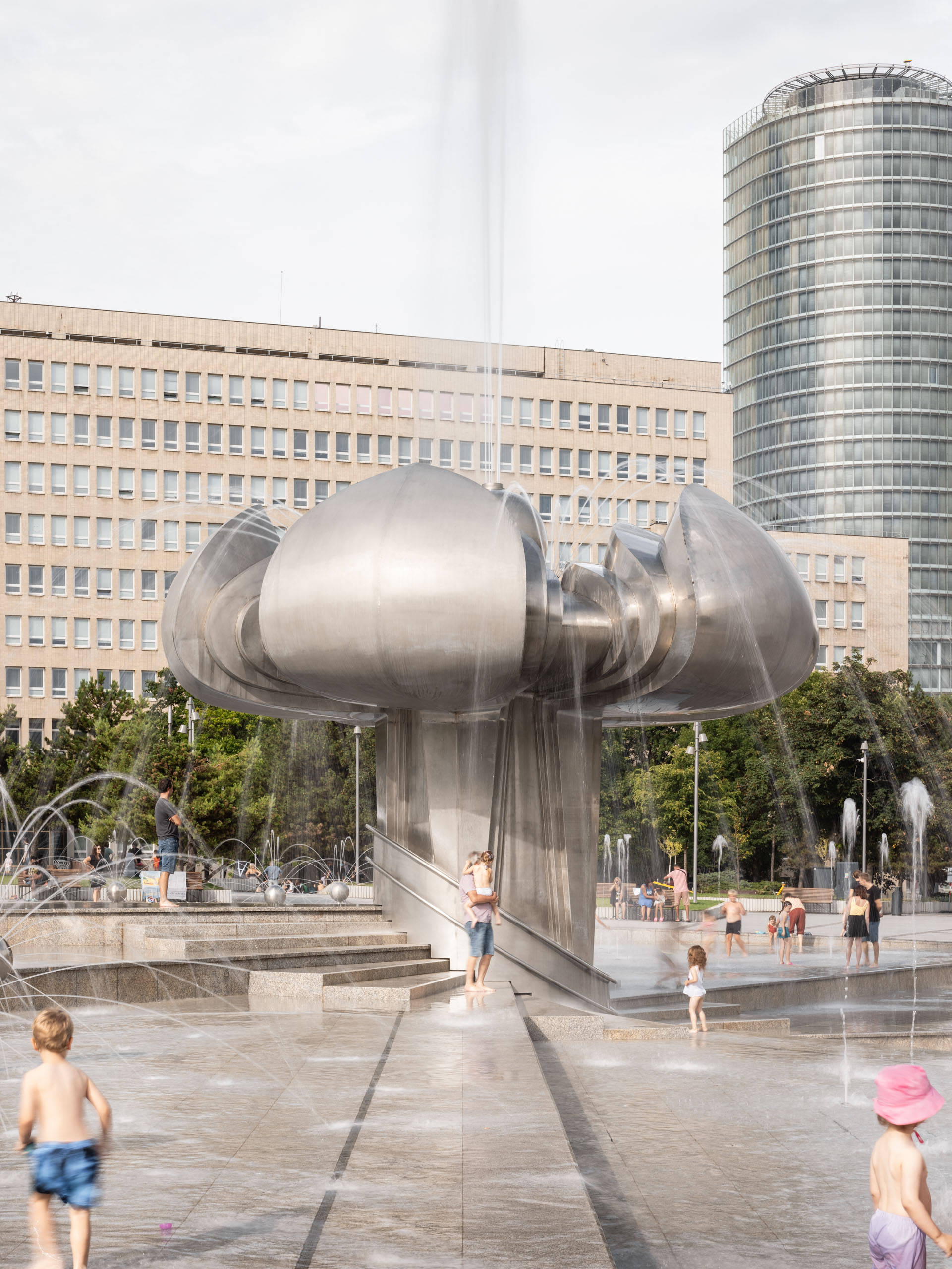When entering Bratislava city centre from the direction of the Central Railway Station, five concrete monumental reliefs by Juraj Meliš entitled Two Thousand Years of Bratislava can be seen the retaining wall. For newcomers and foreigners, they represent a symbolic gateway to the history and identity of the city, while for locals they offer a brief visual reminder of their own history. For both groups, they provide an opportunity to explore history close to a major traffic junction in an unconventional, vibrant, busy part the city.
The semicircular wall transitions the road that leads from the station to a busy thoroughfare. The reliefs lining the wall follow the terrain, and raw concrete surfaces act as pauses between them, rhythmising and articulating the wall. Meliš dedicated the set of reliefs to the history of Bratislava, the city in which he lived and worked from the beginning of his studies at the Academy of Fine Arts and Design in Bratislava in 1960. Eloquently applying the artistic qualities of recessed relief, he covered the entire surface of the white concrete. Meliš's typical sculptural material was raw wood, and although here he used concrete, closer examination of the surface and details reveals impressions of wooden boards from the formwork process (shuttering). He consulted with a team of experts concerning the content to be depicted, collaborating with the historians Blanka Puškárová and Pavel Dvořák, and with the architect Imrich Puškář.
In chronological sequence, the reliefs narrate the history of the city. Each relief has its own thematic focus composed of historical artefacts such as archaeological finds and architecture, complemented by original historical inscriptions. This innovative element in the composition is unique to Meliš's artistic agenda. The first relief, nearest the station, represents the Celtic, Slavic, and Roman settlements, the second depicts the Middle Ages, and the third and fourth show architectural monuments of the following periods (Water Barracks, Town Hall, Reduta, Primatial Palace, Castle, Academia Istropolitana). The final relief records the names of the oldest villages; it differs stylistically in its minimalist approach, and features geometric subdivision and varied typography on its surface.
Interestingly, in addition to his Bratislava works, Meliš in 1985 created a series of ‘historical’ reliefs for Nové Zámky, his hometown. They can still be found in the interior of the cinema Mier, but in this case they were created in ‘his’ wood and colours.
VB
Research status as of 31 December 2023.



